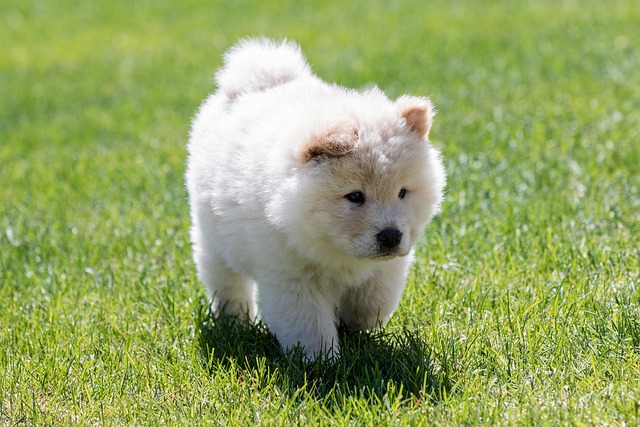
How can I tell if my dog's heatstroke is serious
Let’s be real: It’s a sticky August morning in Los Angeles, and you took your 2-year-old Golden Retriever, Max, for a walk a little later than usual
If you're scrolling through pet adoption pages or browsing breeders' websites, the Chow Chow's lion-like mane and stoic expression might catch your eye. But before you click "adopt" or sign a purchase contract, it's crucial to understand the less glamorous aspects of this ancient breed. While Chows have endeared themselves to many pet owners with their loyalty and unique appearance, they come with a set of challenges that could make them a less-than-ideal fit for some households.
One of the most significant hurdles for prospective Chow Chow owners is their natural aloofness. Unlike Golden Retrievers that greet every stranger as a long-lost friend, Chows are inherently cautious around unfamiliar people and animals. This trait stems from their history as guard dogs in Asia, but it translates into a dog that may require extensive socialization from puppyhood. In many regions, local animal control laws mandate that dogs remain non-aggressive in public spaces. Failure to properly socialize a Chow Chow could lead to tense encounters in dog parks or on neighborhood walks, potentially resulting in fines or even legal action if aggression escalates.
 Grooming demands pose another steep commitment. The Chow's thick double coat isn't just for show—it requires year-round maintenance to prevent matting and skin issues. During shedding seasons, which can occur twice a year, these dogs leave behind clouds of fur that can clog vacuum cleaners and cover furniture within hours. Professional grooming sessions, often necessary every 6-8 weeks, come with a hefty price tag that can add up quickly. For busy professionals or those on a tight budget, this constant grooming cycle might be more than they bargained for.
Grooming demands pose another steep commitment. The Chow's thick double coat isn't just for show—it requires year-round maintenance to prevent matting and skin issues. During shedding seasons, which can occur twice a year, these dogs leave behind clouds of fur that can clog vacuum cleaners and cover furniture within hours. Professional grooming sessions, often necessary every 6-8 weeks, come with a hefty price tag that can add up quickly. For busy professionals or those on a tight budget, this constant grooming cycle might be more than they bargained for.
Health concerns also loom large in the Chow Chow world. This breed is predisposed to several genetic conditions, including hip dysplasia, entropion (where the eyelid rolls inward), and various autoimmune disorders. Vet bills for diagnostic tests, surgeries, and ongoing medication can easily reach thousands of dollars over a dog's lifetime. Many animal shelters and rescue organizations now require adopters to demonstrate financial stability to cover potential medical costs, emphasizing the importance of factoring in these expenses before bringing a Chow home.
Training a Chow Chow presents its own set of complexities. Their independent nature means they're not always eager to please like some herding breeds. Positive reinforcement methods work best, but consistency is key—one-off training sessions won't cut it. In areas with leash laws, an untrained Chow's stubbornness can turn a leisurely walk into a tug-of-war. Moreover, some housing associations and rental properties have breed-specific restrictions due to perceived aggression risks, so it's essential to check local regulations before making a decision.
Another aspect often overlooked is the Chow's need for space. While they're not as hyperactive as Jack Russell Terriers, they still require regular exercise and mental stimulation. Apartment dwellers should think twice; a small living space might lead to destructive behavior as a bored Chow resorts to chewing furniture or barking excessively. In suburban or rural settings, a securely fenced yard is non-negotiable, not only for safety but also to meet legal requirements in many communities that mandate proper containment.
The decision to bring a Chow Chow into your life should never be taken lightly. Their striking appearance and loyal nature can make them wonderful companions, but only for those willing to invest time, effort, and resources into their care. Before you fall head over heels for that fluffy face, research local animal welfare laws, consult with breeders or rescue groups, and consider your own lifestyle. Remember: responsible pet ownership means ensuring that your living situation, financial capabilities, and available time align with a breed's specific needs—because a happy dog makes for a happy home.

Let’s be real: It’s a sticky August morning in Los Angeles, and you took your 2-year-old Golden Retriever, Max, for a walk a little later than usual

You're enjoying a summer afternoon at the park when you notice your dog has stopped panting and appears disoriented - their gums are bright red

Let’s paint the picture: You’re in your Denver apartment, watching your 4-year-old Boston Terrier, Ruby, plop down mid-play session with her favorite toy

Many dog owners notice their pets nails seem shorter after regular walks,but how much does this daily activity actually help?The answer depends on where you walk—concrete sidewalks or asphalt streets gently file nails as a dog's paws hit the ground

Most dog owners notice their pup scooting across the carpet at some point, but few connect it to impacted anal glands. These small sacs near a dog’s rectum secrete a scent for marking territory

Most vets agree that regular dog teeth cleaning is key to avoiding painful dental issues later. For healthy adult dogs, a professional cleaning at the vet’s office every 12 to 18 months usually works well.